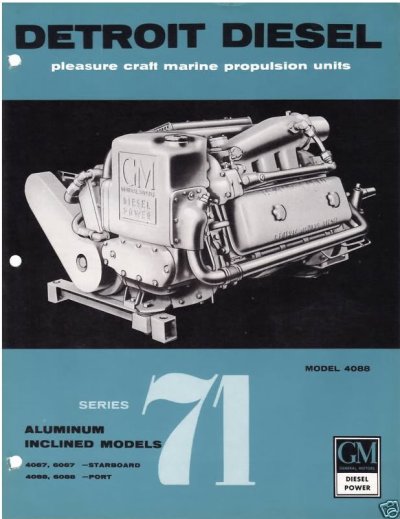brian eiland
Guru
- Joined
- Jul 17, 2013
- Messages
- 930
- Location
- USA & Thailand
- Vessel Name
- RunningTide
- Vessel Make
- 37 Louisiane catamaran
A vessel has been brought to my attention that is equipped with twin 4-71 DD engines' It quoted as have 660 hp total,....330hp each.
Is that even possible with these size engines??
Is that even possible with these size engines??

